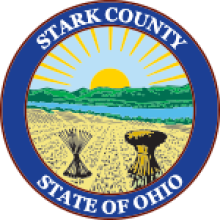Stark County, Ohio, Hires Consultant For Feasibility Study
Longtime efforts by community leaders in Stark County, Ohio, to create a new countywide Internet network have recently taken important steps forward.
Local Support Is Strong
In the past few months, three local government agencies approved informal resolutions to explore building the proposed network, including the City Council in Canton, the Stark County commissioners, and the trustees in Jackson Township. County population is about 375,000 within the 575 square miles located in the northeast section of the state.
In May, an all-volunteer organization comprised of local leaders called the Stark County Broadband Task Team (SCBBTT) announced that they had raised $100,000 needed to fund a feasibility study to explore the construction of the network. The SCBBTT also recently announced they hired a consultant to conduct the study.
We Have a Need for “Transformational” Internet Speed
The SCBBTT is comprised of a large group of volunteers from the county including major figures from government, the business community, and the nonprofit sector. Several years ago the group began working on a plan to construct the network, labeling it a “fourth utility” and saying that Stark County was “falling behind its peers in Ohio and elsewhere in the United States in terms of educational attainment, household income, retention of high-school graduates and overall prosperity.”



